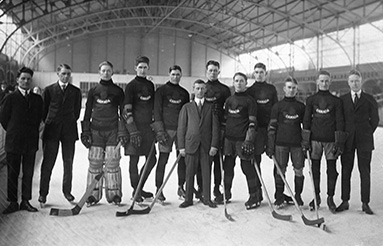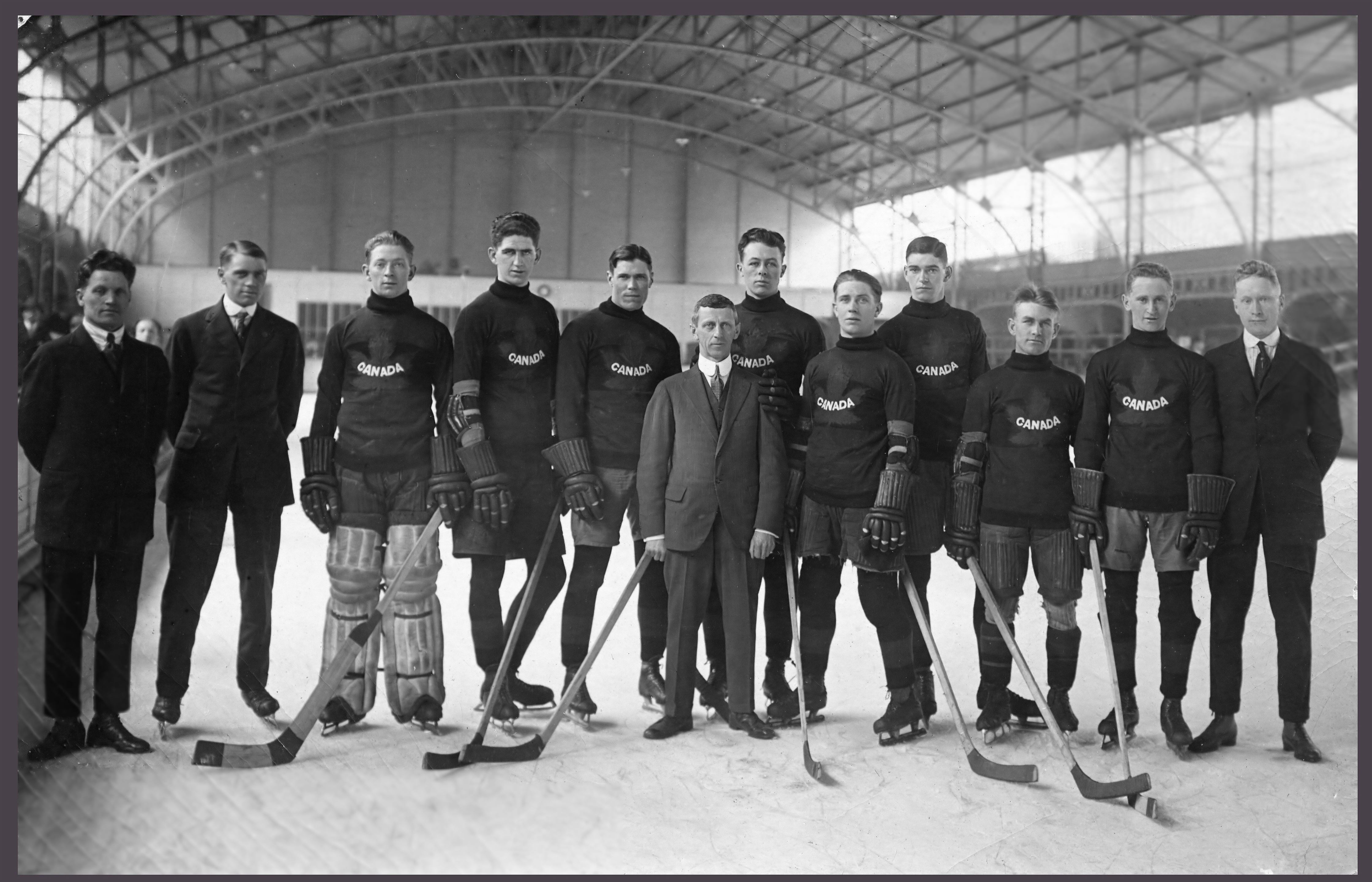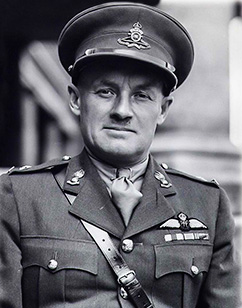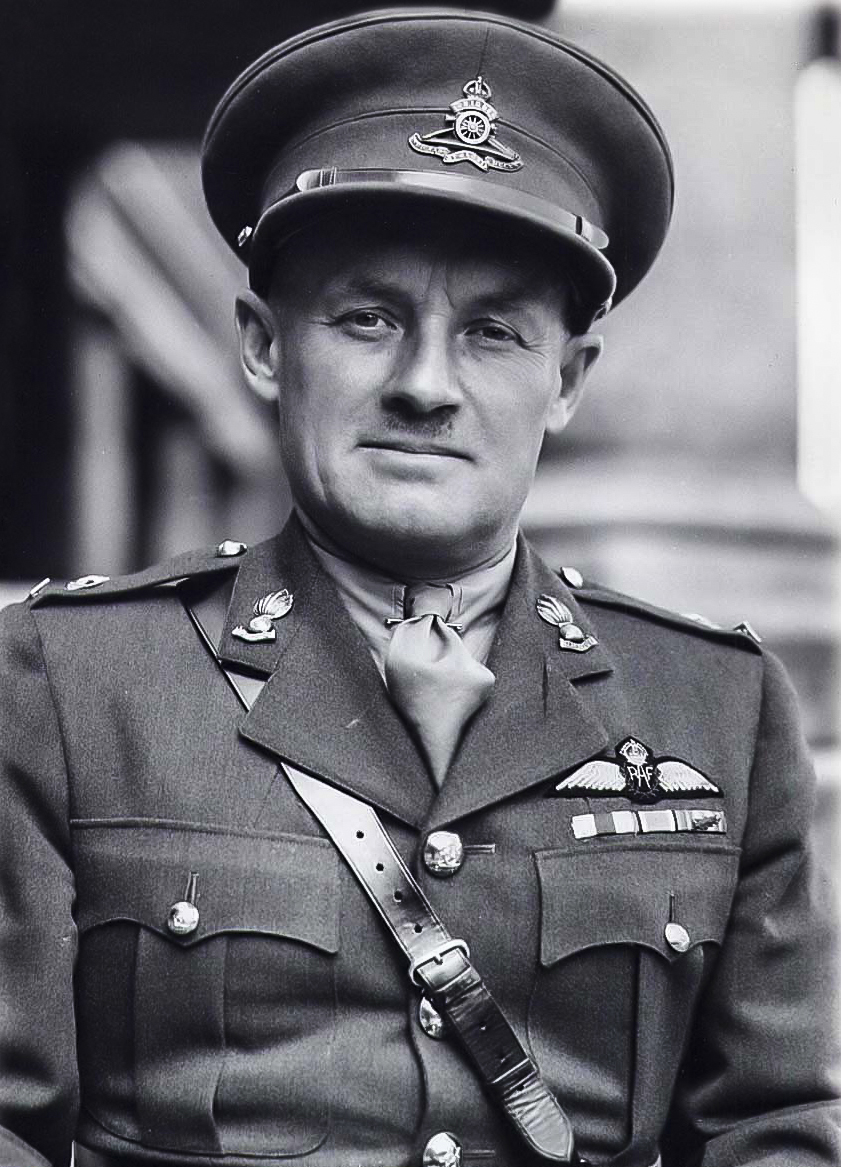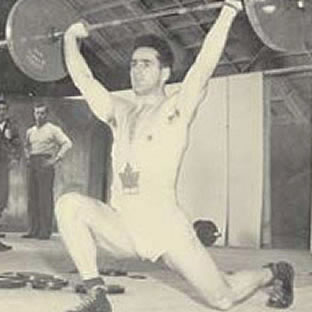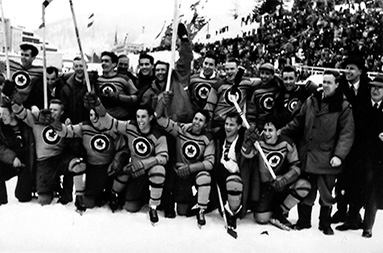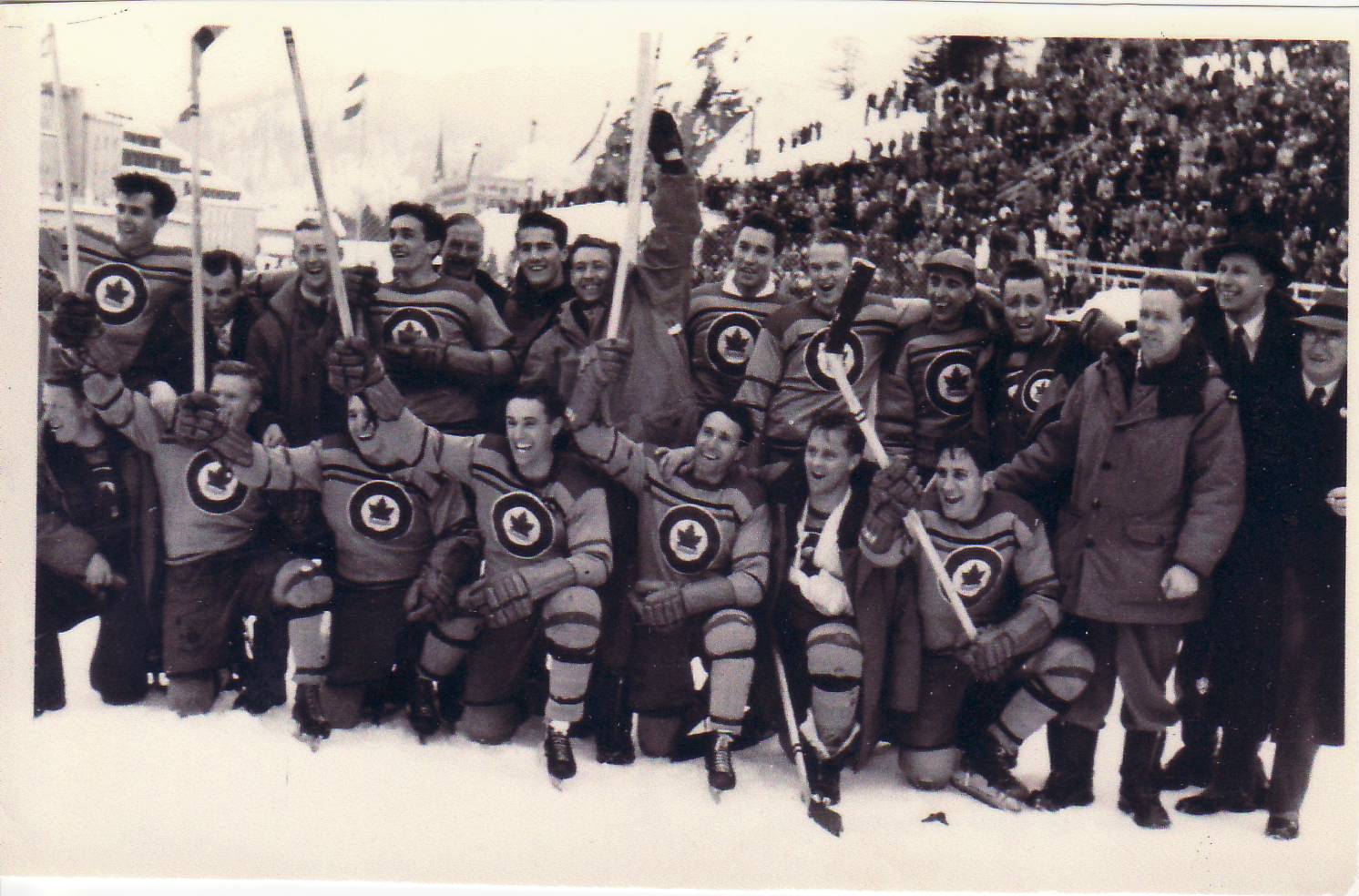Olympians 1920-1949
Index
The 1920 Canadian Olympic gold medal hockey team
Ice hockey was an Olympic sport for the first time in 1920. Canada was represented by the Winnipeg Falcons, who had won the Allan Cup that year as the country’s top senior men's amateur hockey team.
The Winnipeg Falcons had an interesting background. Founded in 1911, its roster was initially made up entirely of players of Icelandic descent. The coming of the First World War three years later had a great impact on the sports landscape in Canada as hundreds of thousands of young men would enlist in the military—including every member of the Falcons.
The brave players served overseas during the war and two of them lost their lives. When the surviving members made it back home after the conflict, they laced up their skates again and their team would earn the right to represent Canada at the Olympics.
The 1920 Olympics Games were held in Antwerp, Belgium—a country that had suffered greatly during the recently-ended First World War. The Falcons would defeat their opponents handily (capped with a 12-1 victory over Sweden in the final) and won the very first gold medal in hockey. Before returning home to victory parades and accolades, the team toured the battlefields of nearby Flanders where several of them had served as soldiers not so long before.
Today, the Hockey Hall of Fame in Toronto and Manitoba Hockey Hall of Fame both have permanent displays honouring the Falcons and their impressive Olympic victory.
Conn Smythe - Canadian Soldier Olympian
Conn Smythe of Toronto played on the University of Toronto hockey team until the First World War interrupted his studies. A week after winning the Ontario Hockey Association championship in 1915, he and eight teammates enlisted. Smythe served in the Canadian Artillery where he earned the Military Cross. He transferred to the Royal Flying Corps in 1917 and was an airborne observer until being shot down and captured. Despite two escape attempts, he spent more than a year in a German prisoner of war camp.
Smythe returned to his hockey roots after the war and helped found the Toronto Maple Leafs. He also coached the Varsity Grads team that would go on to win at the 1928 Winter Olympic Games in St. Moritz, Switzerland. Smythe did not travel to Europe with his team in protest of a controversy over the eligibility of some of his players, but he still received a gold medal.
Remarkably, Smythe enlisted again at age 45 during the Second World War. He was commanding an artillery battery in France when he was wounded in an enemy bombing attack on an ammunition depot. Major Smythe survived, but suffered injuries that would affect him for the rest of his life. The National Hockey League trophy for the most valuable player in the playoffs is named in his honour.
Jack Varaleau - Canadian Soldier Olympian
James (Jack) Varaleau was born in Vanier, Ontario and joined the military during the Second World War. As an airman with the Royal Canadian Air Force, he became one of Canada’s elite weightlifters. Varaleau came first at the 1950 British Empire Games in his weight class. He represented our country in the light-heavyweight division in the 1948 Summer Olympic Games in London, England and in the 1952 Summer Olympic Games in Helsinki, Finland. He did well against such elite competition, breaking the Olympics bench press record at one point during the 1948 games (although he would go on to finish in sixth place).
Flight-Sergeant Varaleau served almost 30 years in the military before retiring in the late 1960s. Soon after, he was inducted into the Canadian Armed Forces Sports Hall of Fame. After his retirement from the military he worked with the City of Vancouver and also helped develop fitness programs for seniors. Today, the Jack Varaleau Fitness Centre can be found in the west end of Vancouver, named in honour of this notable Canadian serviceman-athlete.
The 1948 Canadian Olympic gold medal hockey team
Less than three years after the end of the Second World War, the Winter Olympic Games were held in St. Moritz, Switzerland. Many of the players on the Royal Canadian Air Force Flyers hockey team that competed at the Games were Veterans of the war.
The RCAF Flyers celebrate their gold medal win over Switzerland. Back row, (L to R): André LaPièrre, Hubert Brooks, Andy Gilpin, Ted Hibberd, A. Sydney Dawes (head of the Canadian Olympics Association), Pete Leichnitz, Irving Taylor, Wally Halder, George Mara, Murray Dowey, George McFaul, Frank Boucher, Sandy Watson, and George Dudley (head of the Canadian Amateur Hockey Association). Front row (L to R): Roy Forbes, Orville Gravelle, Reg Schroeter, Ab Renaud, Patsy Guzzo, Louis Lecompte and Frank Dunster. Photo: Department of National Defence
The team had a rocky beginning. It was formed at the last minute and lost several exhibition games, but Canada's underdogs came out on top. Even being pelted with snowballs by the hometown crowd during a game against the Swiss team on the outdoor rink could not stop them. The Flyers finished the round-robin tournament with seven wins and one tie for an overall record that deadlocked them with Czechoslovakia. Canada took home the gold medal based on their superior goals-for and goals-against averages.
The 1948 Royal Canadian Air Force Flyers’ gold medal win was selected as the ‘greatest moment in Canadian Armed Forces sports history’ in 2000 and the team was inducted into the Canadian Olympics Hall of Fame in 2008.
- Date modified:
